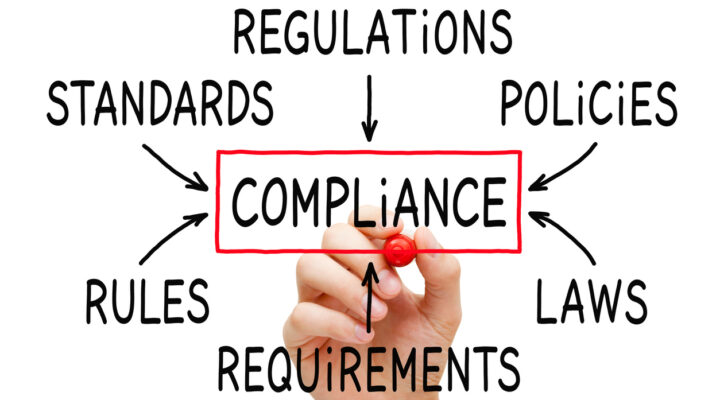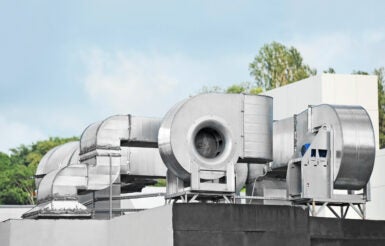Learn how the Fan Energy Index relates to the compliance landscape
Although there is no official federal standard for highly efficient commercial and industrial fans, individual states are empowered to create and enforce their own performance regulations, if there are no federal preemptions in place.*
In the absence of a federal standard, many states align with the American Society of Heating, Refrigeration and Air-Conditioning Engineers (ASHRAE) and/or the International Energy Conservation Code (IECC). For instance, current commercial code in Idaho aligns with the 2018 IECC and ASHRAE 901.-2016. Montana uses the 2021 IECC and ASHRAE 90.1-2019, which is also used by Oregon. ** Washington uses its 2021 State Energy Code, which defines the Fan Energy Index (FEI), and outlines compliance requirements for heating, cooling, ventilating, and other needs in commercial buildings.
Codes adopted and enforced by individual states, particularly those with stringent energy codes, may lead to changes that affect the broader market. For instance, the California Energy Commission (CEC) released guidance, Title 20/24, that defined commercial and industrial fans and blowers. Under this regulation, any fan—with limited exceptions—that meets the CEC definition and is shipped into California must comply, regardless of where the product was manufactured. To be considered certified and compliant, fans are required to have an affixed label that must include information about the following parameters:***
- Maximum airflow (CFM)
- Maximum fan speed (RPM)
- Maximum pressure (inches of water gauge)
- Type of pressure (static or total)
- FEI performance envelope indicators (i.e., levels were FEI ≥ 1.0)
Establishing the label requirement helps that, when used correctly, installed fans operate within the desired range of efficiency. Leading industry associations such as the Air Movement and Control Association International, Inc., and manufacturers continue to strongly advocate for fans with higher efficiency and the viability of FEI as the preferred metric for fan efficiency. Some programs at the utility, national, and regional level also tie incentives to higher FEI requirements for retrofit projects.
Key takeaways: As states continue to push for increased efficiency in fans and fan systems—and a standardized method for conveying that information—engineers and specifiers, distributors, buyers, installers, and maintenance staff should understand FEI, what it indicates, and how and when to apply it to benefit their projects.
Manufacturers who stay ahead of the compliance curve, even if not federally mandated, have the benefit of futureproofing their products and being available to meet the needs of customers. Customers who purchase highly efficient fans may also benefit by being prepared for compliance and may not need to reinstall systems to meet new laws.
*2025-01-17 Energy Conservation Program: Energy Conservation Standards for Fans and Blowers; Proposed rule; withdrawal. Regulations.gov, Jan. 2025.
**Building Energy Codes Program, State Portal. Office of Energy Efficiency & Renewable Energy.
***The Fan Industry Regulation in California. The New York Blower Company.
Additional resources
Read the other parts of the 5 Things You Should Know Before Selecting an Efficient Fan series:
- Part 1: Understand the Fan Energy Index
- Part 2: Learn how the Fan Energy Index relates to the compliance landscape
- Part 3: Know how the Fan Energy Index helps improve efficiency and savings
- Part 4: Consider the non-energy benefits of fans with a higher Fan Energy Index
- Part 5: Use the Fan Energy Index to make the final selection



